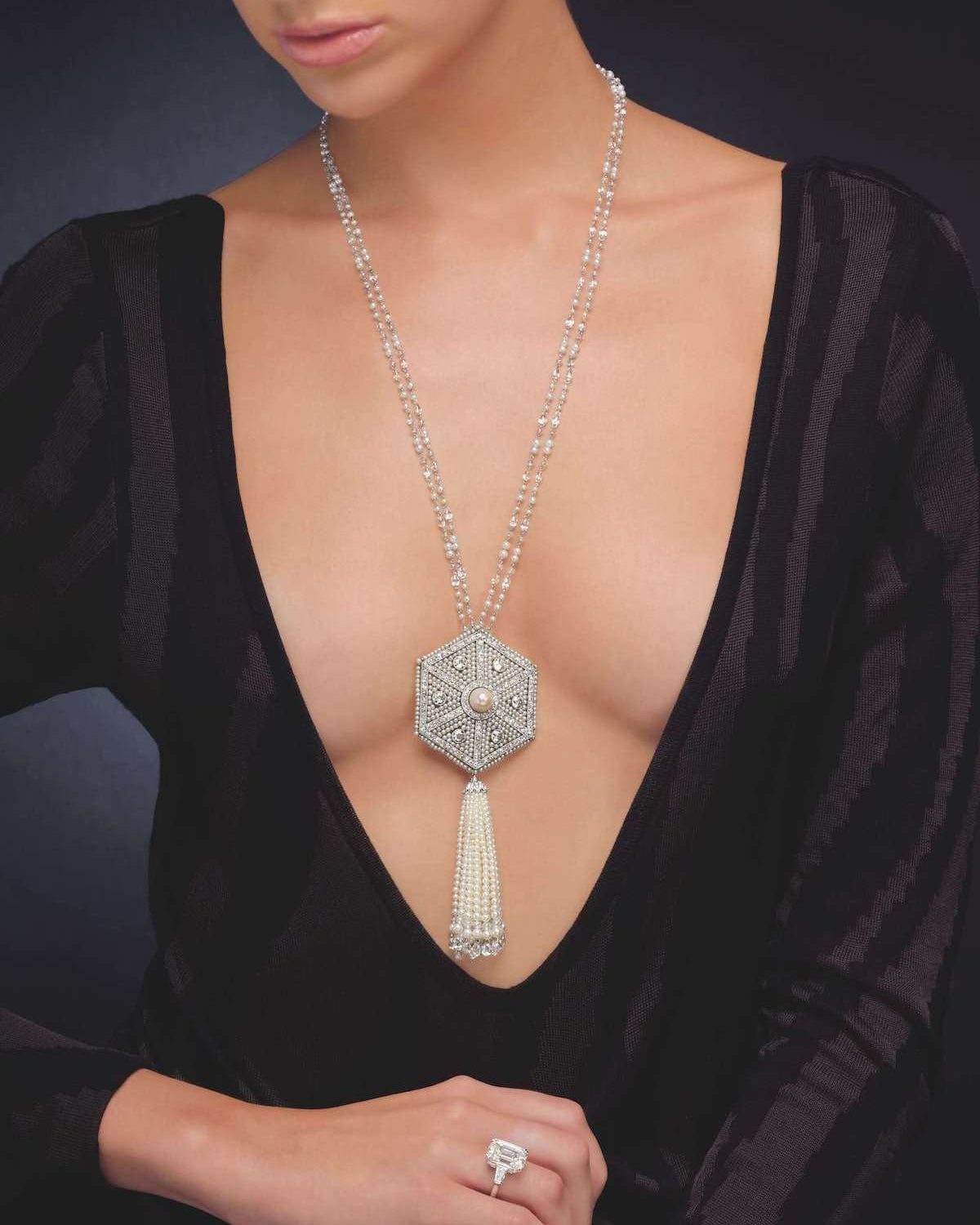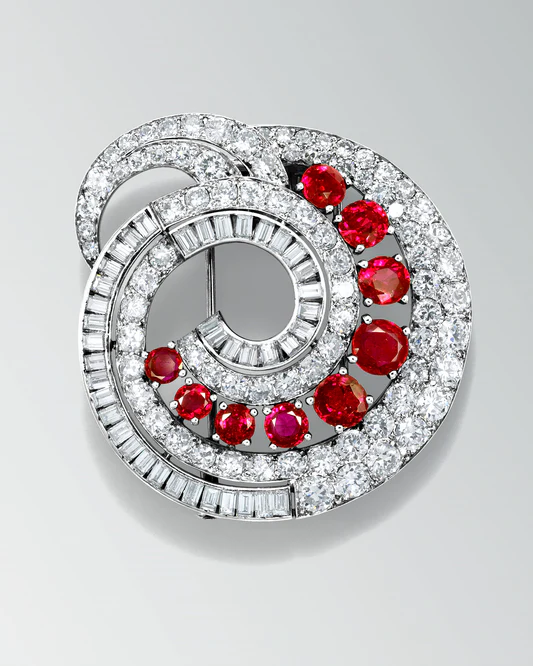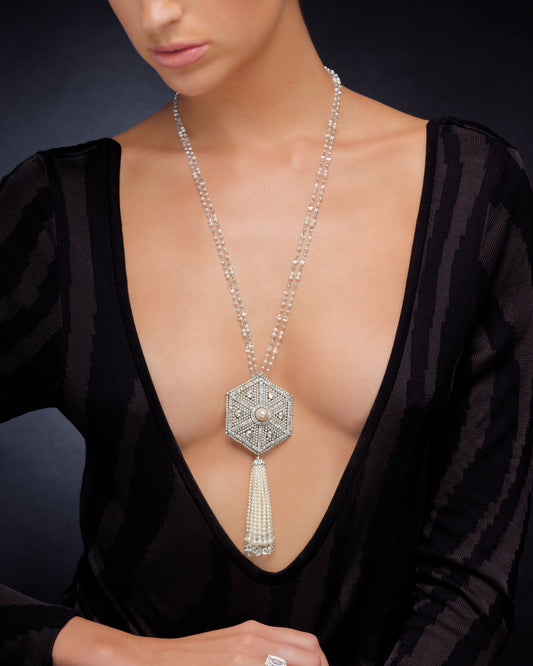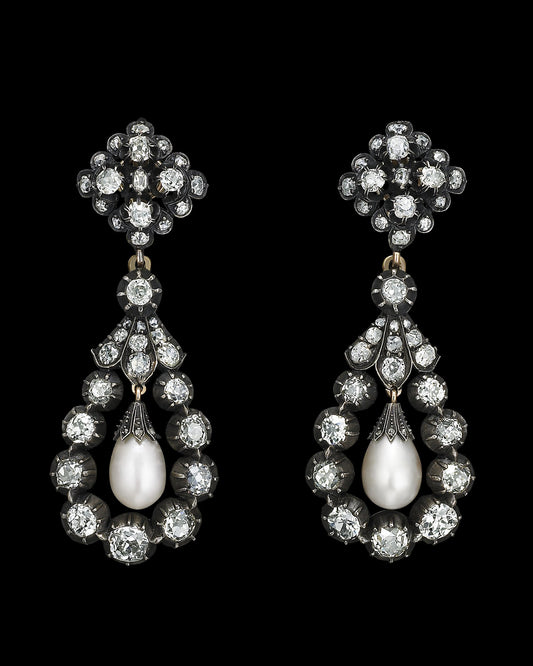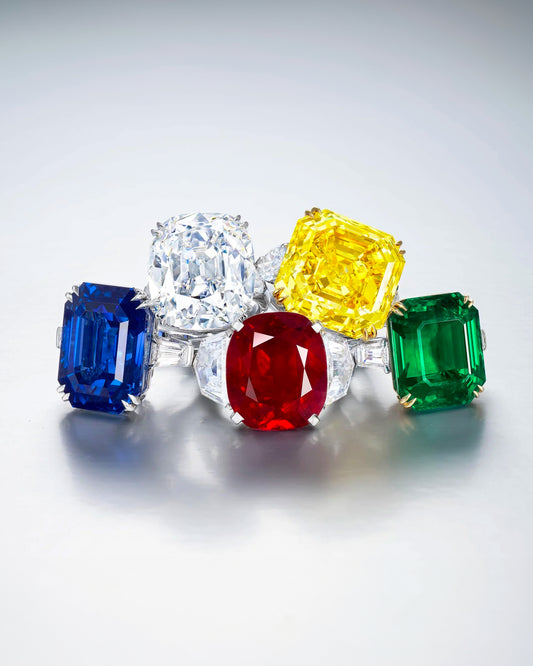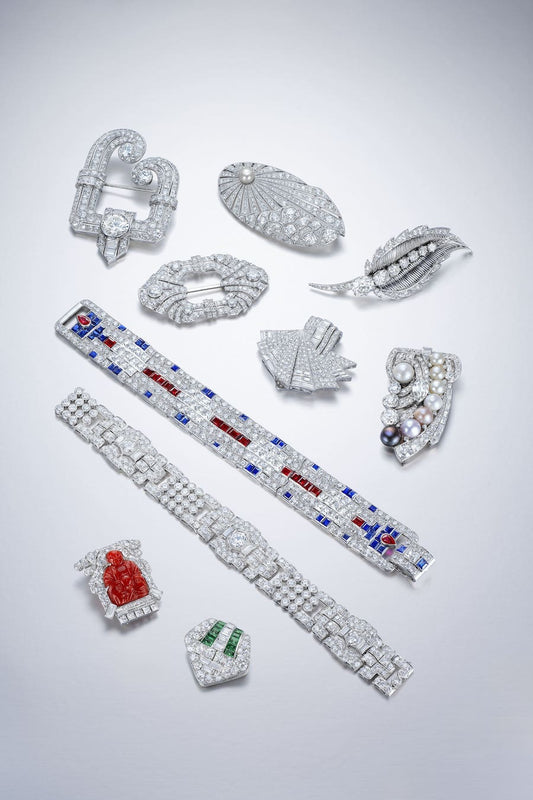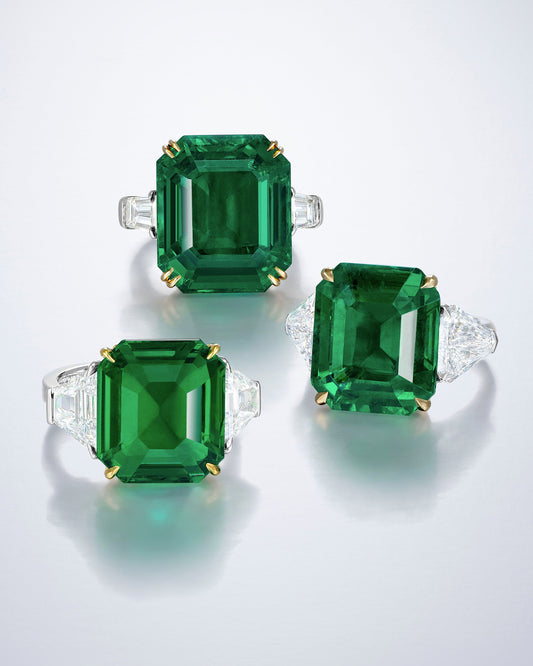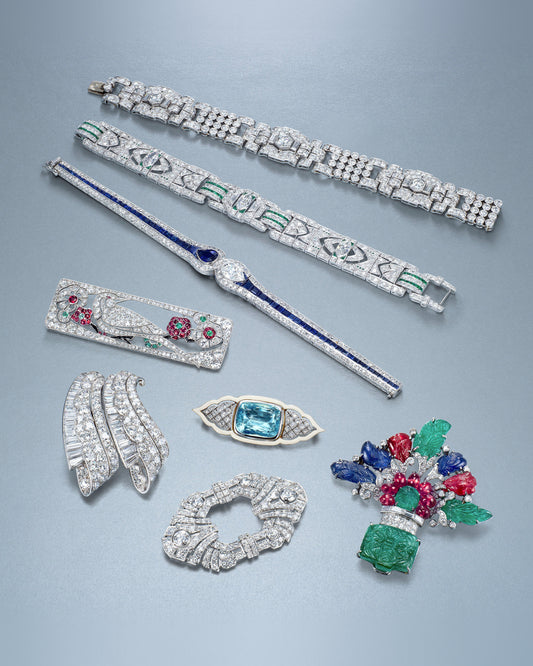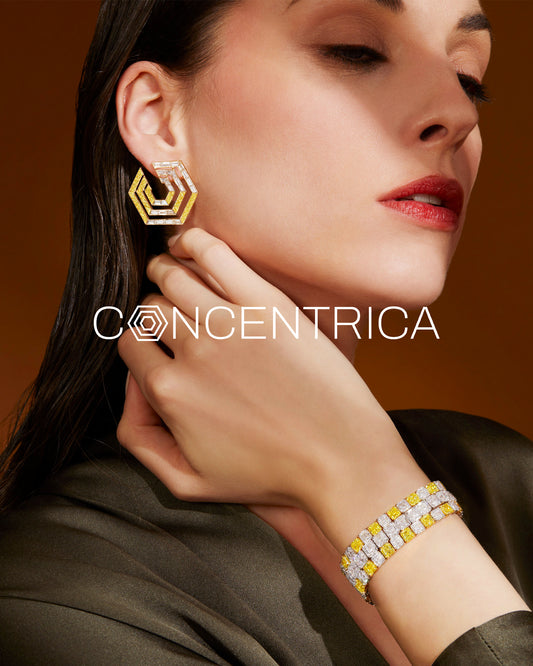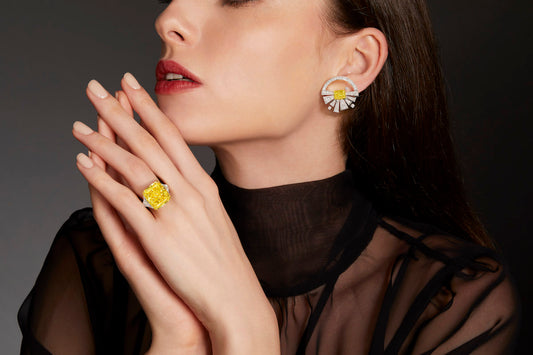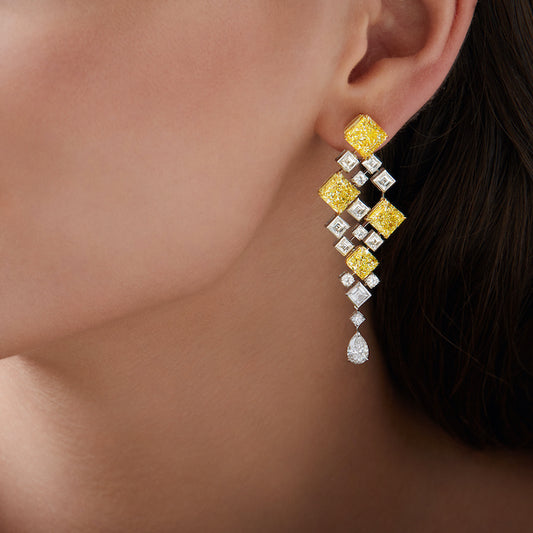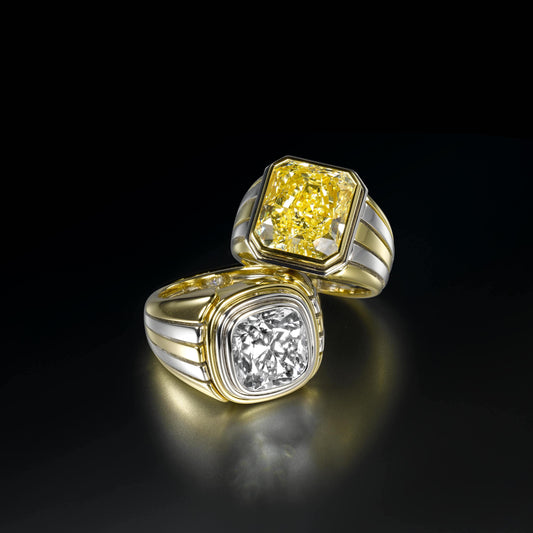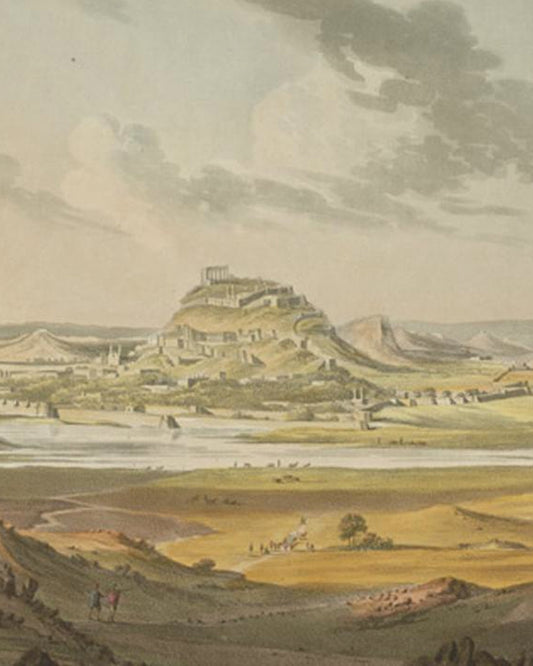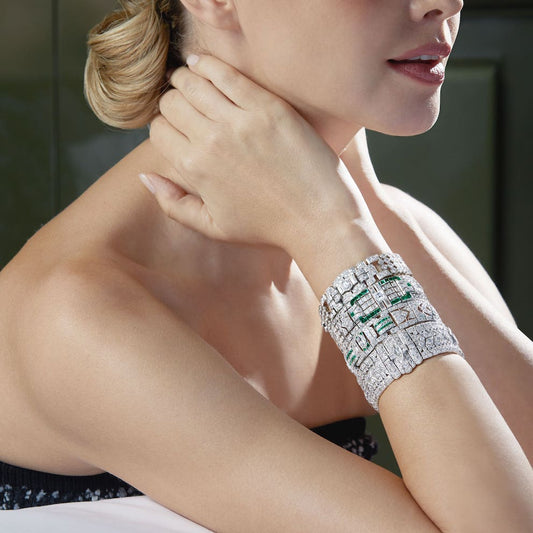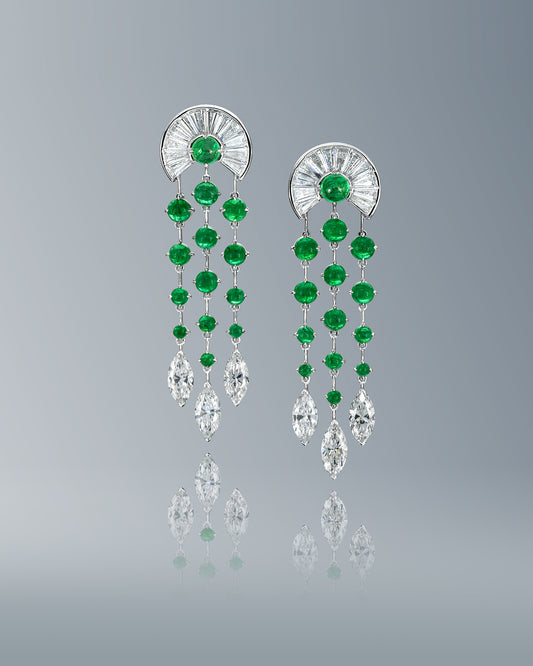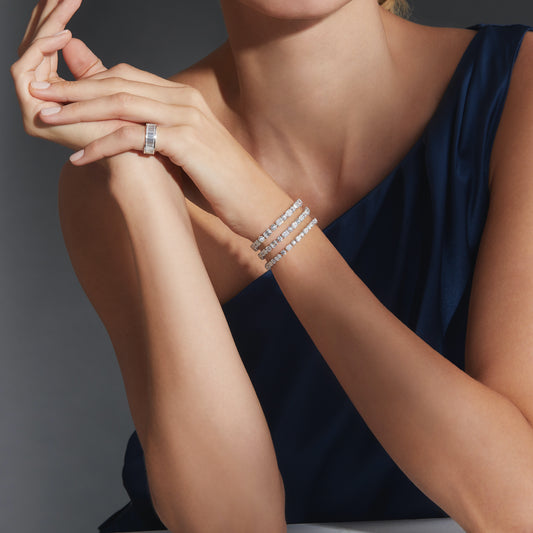The comparative value of signed versus unsigned estate jewels has long been debated. And like most debates, there are pros and cons to both sides. But ask any knowledgeable advisor and they’ll tell you that the desirability of a jewel is determined by several criteria with the signature being the least of them all.
What is a signed jewel?

A signed jewel typically features a stamp or signature of the maker engraved into the metal of the mounting or on the underside of a jewel. This practice started in the late nineteenth century during the Art Nouveau period when craftsmanship and individual aesthetics were held in high regard. Then in the twentieth century, it became popular for both jewellers and renowned workshops to leave their marks on a piece. This is now commonplace for all jewellery brands.
In contrast, an unsigned jewel has either lost the original signature owing to wear or resizing, or the marks have been obscured over time. But in most cases, the piece was never signed so it’s nearly impossible to connect it to any specific workshop or jewellery house.
What is the most important quality in any jewel?
The most important question to ask yourself about any jewel is how does it make you feel? A jewel worth adding to your collection will strike a chord in you based on its design or inherent beauty. Whether it’s a cascading pair of chandelier earrings or an elaborate bejewelled necklace, a piece with exceptional design will always resonate.

Art Deco Old Mine Colombian Emerald & Diamond Necklace. Circa 1935, unsigned.
What makes a well-constructed jewel?
First, it’s about feel. Is it solid? Is it flexible? How does it fit? Turn the piece over and observe the underside, is the mounting smooth? A well-made jewel will be painstakingly constructed. Examples of a high level of workmanship include smooth metal work and seamless joints or linking mechanisms. It is also particularly important to note the condition of the piece. If repairs are present they should be flawless, there should be no stones significantly damaged or missing. These elements aren’t always apparent to the untrained eye, which is when you turn to a trusted advisor who can also explain the quality of the materials used and the overall condition of the piece.

Art Deco Sapphire and Diamond Bracelet. Circa 1920's, by Lacloche.
Are signed jewels more valuable than unsigned jewels?
The most sought-after signed jewels are the recognisable names including Cartier, Van Cleef & Arpels, Bulgari, and others. These names certainly carry a premium, but there are also other variables to consider when debating overall value. Beauty, craftsmanship, stone weight and quality, as well as the condition of the piece must all be taken into account. The jewel’s era and certain desirable design motifs will also affect price.
Let’s look at an example; the value of a well-made, signed Art Deco diamond bracelet will vary to a certain degree compared to a similar bracelet without a signature. But a prized, Art Deco, Cartier Tutti Frutti bracelet—one of their iconic pieces — is highly collectable and would therefore attract a much higher price. In this case, the era, the signature as well as the brand’s celebrated design element would add significant value to the piece.

Art Deco Diamond and Emerald Bracelet. Circa 1925, unsigned.
There are also instances of valuable unsigned estate jewels which feature large diamonds or gemstones. For these pieces, their value is determined by the stone’s gemmological characteristics. Take for example, a 30-carat colourless diamond ring. A signature on a piece like this will have little impact on its value. Instead, it will largely be determined by the stone’s gemmological certificate. Again, there are exceptions. An important signed antique diamond or gemstone ring, particularly of the Art Deco period, commands a significant premium over a comparable unsigned piece. However, their value is still largely determined by the gemmological report.

Art Deco Emerald and Diamond Brooch. Circa 1927, by Oscar Heyman.
Who makes the jewellery?
The workshop marks you’ll find stamped on some pieces often have some interesting secrets to tell us about signed jewels. Sometimes, they were not even made by the jewellery brand that signed them. Instead, they were created at an established workshop which may have served several makers. Jacques L’Enfant, for example, was the top Parisian maker of gold chains from the 1940s to the 1970s and he created signed pieces for all the French and American houses. Strauss, Allard & Mayer was a workshop particularly recognized in the Art Deco period for master enamel work, and similarly, they made pieces for all the great French houses. The same workshops which served the best houses would make pieces to whatever specifications a brand desired, and sometimes they would remain unsigned. It meant those unsigned pieces could have craftsmanship standards that met or exceeded a similar signed piece.

Estate Diamond Brooch. Circa 1950s, by Chaumet.
What’s in a name?
While it is important to understand the nuances between signed and unsigned jewels, a signature is not necessarily an assurance of quality, desirability, or value. Sometimes a maker’s signature can add cachet but it can also distract from obvious flaws or poor design choices. The most important quality of any jewel is the emotional response you have to it. After that, it’s about quality and finding a trusted and knowledgeable advisor who will help you recognise and appreciate these jewels. The signature of a particular maker can add a layer of interest and connection to the deeper story of the design, but it should be the last factor considered. In contrast, unsigned jewels can offer excellent quality but at a more affordable price point, often making it a more savvy acquisition.
